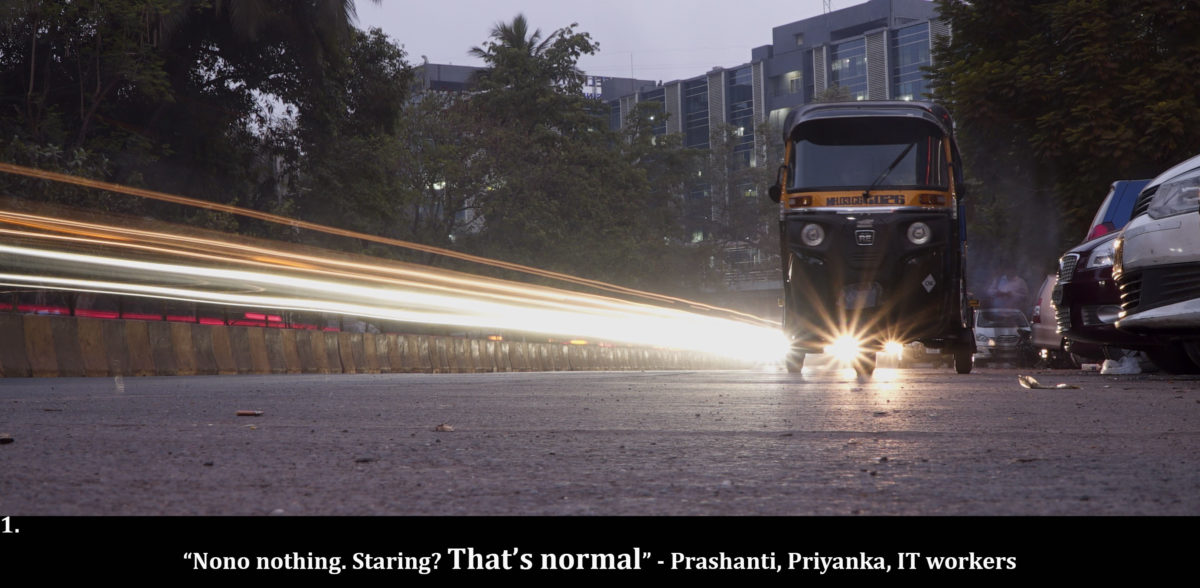Looking at Transport through a Gendered lens


A Colombian and French national, Jimena Serrano is based in Washington DC where she spends her time creating economic opportunities for women in the energy and agricultural sectors in Latin America for a development bank. Her prior experience includes the construction of indices focused on the environment for female entrepreneurial activities as well as on the environment for financial inclusion. A lawyer in her native Bogota, she decided to migrate to the United States to obtain a masters degree in International Economics from the Johns Hopkins University. Her concern on the problems women face and the importance of bringing visibility to data led her to volunteer with Safecity.
Looking at Transport through a Gendered Lens
A quick search into inventions that have marked the evolution of transport yields only male names: George Stephenson (railway), Siegfried Marcus, Karl Benz (automobile) Kirkpatric Marmillan (bicycle), Carlton C. McGee (parking meter), Nihls Bohlin, Volvo (seat belt), Charles Pearson (subway idea)… I find hard to believe that no women participated in these inventions; we have learned how history has always placed them behind the scenes – have you seen the movie Hidden figures? The point here is that with this over-representation, if not dominance of men in the transport sector, it is not surprising that public transport systems consider at all women’s mobility reality. And as we witness such low participation of women in science, technology, engineering and math (STEM), the design of mobility systems through a gender lens is something that will take many years to mainstream.
Ok, that is unfair just like everything else related to gender differences these days. Why does it matter so much in this context?
Well, it matters because it is not only unfair; it is inefficient for economies and households. Looking at transport through a gender lens can give you a whole different picture about users and employees in the sector. For example, did you know that women tend to use more public transport than men? Or that women’s travel patterns are different than men’s because of their care taking responsibilities? And that because of that they are more vulnerable to any changes in transport fares? Or that female employment in land transport is less than 14% in European countries, and less than 1% in India? And that these jobs tend to pay better than those in traditional sectors that employ women such as retail, trade, hospitality, restaurants, etc? Yes, think gender pay gap!
When you start using the gender lens, you realize that maybe it would be good to keep subway stations well light. Or that women that take public transportation during rush hour might find themselves more exposed to being victims of sexual harassment because, you know, in rush hour people get sticky. On this point, one study found that public transportation offers a level of anonymity that favors impunity of sexual abuse practices. Or that perhaps it would be good to have some women sitting at the table when setting public transit fares. And how about recruiting female operators? Research shows that they tend to be more careful and detail oriented than their male counterparts. How did we not think of that?!!
This sounds horrible… is there a way to fix this?
The good news is that yes, there is hope. Development banks, which often provide financing to cities that are investing in these systems are asking their clients to pay attention to these things. This means in practice introducing surveys that capture key insights about experience of using transport, security perceptions, all of this data disaggregated by sex. Some countries have also engaged communities- ensuring female presence- in the design of these projects so all concerns are addressed at an early stage.
A huge part of this work lies on changing the culture. Transport is a male-dominated culture, which contributes to promote stereotypes related to the exclusion of women in transport. As a result, women are discouraged to apply to jobs as operators of transport, or are not studying in areas relevant to this sector. When they actually enter the sector, their retention rate is low due to the incompatibility of work-life balance, poor working conditions and a culture of harassment.
Employers themselves need to change the way they recruit if they are serious about including women. Some employers are building human capital and training women themselves so they can better integrate this important part of the population.
On the user side, transport operators are investing on training their staff on gender issues and security, and promoting awareness of non-acceptable sexual behavior targeting women. Moreover, some cities have opted to segregate women and men during rush hour to avoid sexual harassment incidents. Cities in countries such as Mexico, India, Thailand and Japan have implemented this type of measures, not without controversy. Critics of transport segregation argue that by separating women and men, the real problem – gender violence – is not being solved. It is like governments were “giving up” on the problem and choosing the easy way out.
So things are happening, but this is only the beginning. Gender needs to be mainstream in transport projects because it will make public transport more successful and responsive to users’ needs; not because a bank is asking to consider this as a condition to providing a loan. And although some of the actions to make women feel safer do not happen without controversy at least the issue is on the table.
Opinions are of the writer.

